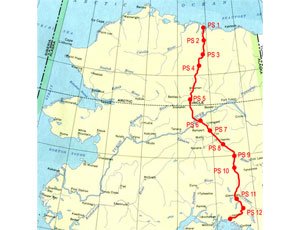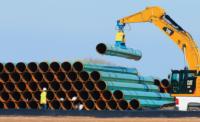State and federal regulators are closely monitoring conditions at the Trans Alaska Pipeline System following the discovery of a leak and a pair of shutdowns at Booster Pump Station 1. Alyeska Pipeline Service Company, the pipeline operator, says engineers this week re-started the 800-mile pipeline for a second time since the leak was located in the basement of the facility January 8.
“The leak was discovered by one of the personnel during routine surveillance of the system,” says company spokesman Matt Carle. “The crews installed a 157-ft bypass line that allowed us to move the oil without impacting the area where the leak first appeared.”
Company officials initially shut down the system to discover the source of the leak in a secondary line of the booster station. Engineers then re-started the system January 11 to heat the oil to prevent freezing in the line and also to give them time to assemble the bypass. They shut down the system again four days later to begin installing the bypass, completed January 17.
Ray Doering, an engineer with Enbridge Inc., an oil pipeline company in Alberta, says Alyeska’s problems may have been complicated by the pipeline’s original design, which dates from the 1970s. Engineers had to wait for approval from regulators to re-start the station and then scrambled to assemble the bypass line, using parts that came from as far away as New Jersey and Texas.
“You should have the ability to bypass and continue to operate immediately,” said Doering. “That’s standard design practice. When you look back perhaps to Alyeska and the design practices of the late 1960s or early 70s perhaps those things weren’t given as much attention.”
Carle says the bypass will be a permanent fixture at Pump Station 1 and that crews will begin cleaning the system shortly. Engineers are also still attempting to determine the cause of the leak, while simultaneously restoring the pipeline to normal operation.
“There is still a period where we’ll evaluate the system, because we’ve had cold crude in the system for 10 days now. So crews are evaluating how the system is performing during this re-start, including the impacted area at the booster pump building.”
Pump Station 1 is the oil’s first stop in the pipeline before making its way to the Valdez marine terminal. Prior to discovery of the leak, the pipeline had been carrying about 630,000 barrels per day, a figure that dropped to approximately 400,000 barrels per day after the first shutdown. With installation of the bypass this week, the pipeline is moving about 566,000 barrels.



Post a comment to this article
Report Abusive Comment